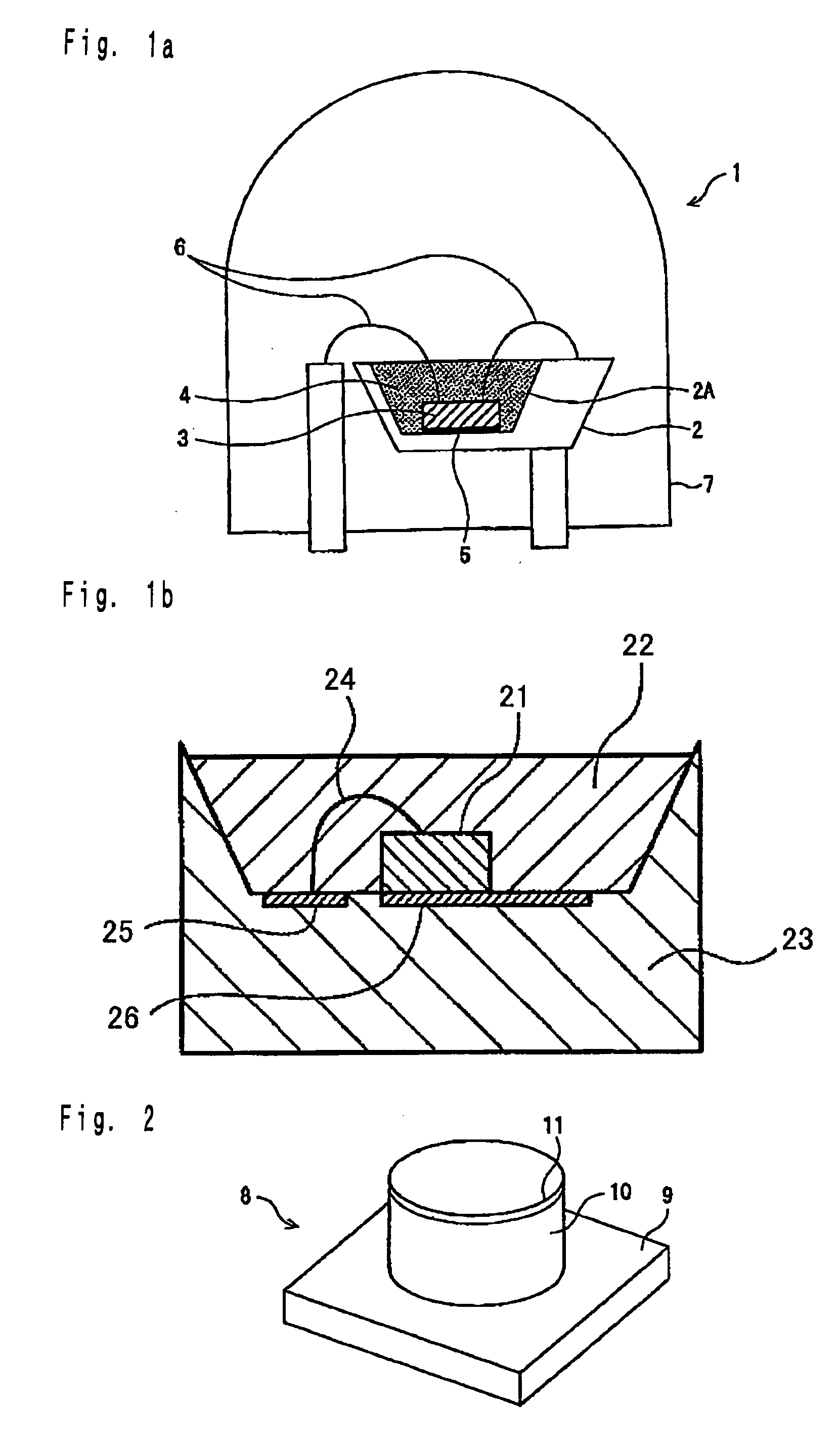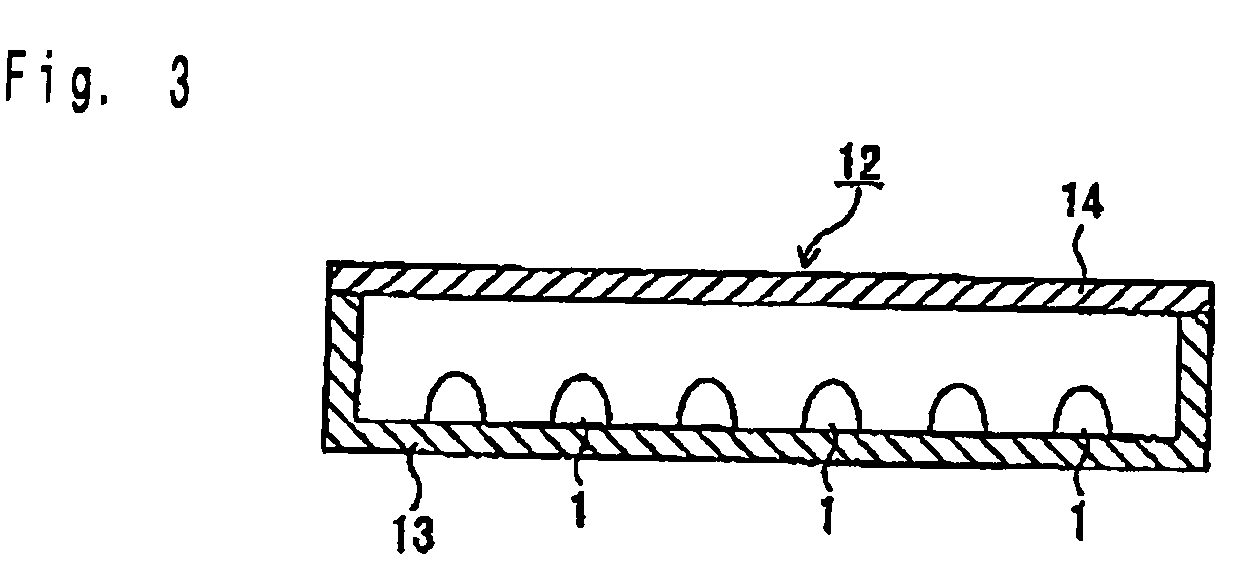Phosphor and light-emitting device using same
a technology of phosphor and light-emitting device, which is applied in the direction of solid-state devices, chemistry apparatus and processes, and light-emitting compositions. it can solve the problems of environmental pollution, low color rendering properties, and difficulty in solving the improvement of color rendering properties. achieve the effect of high luminance and high luminous efficiency
- Summary
- Abstract
- Description
- Claims
- Application Information
AI Technical Summary
Benefits of technology
Problems solved by technology
Method used
Image
Examples
example
[0391]While the present invention will be described in further detail below by examples, the present invention is not limited to examples described below within a range in which the scope of the invention is not impaired.
[Measurement, Evaluation, etc. of Phosphor]
[0392]In each of examples and comparative examples, various evaluations of phosphor particles were made by the following methods.
[0393]The emission spectrum of a phosphor was measured with a fluorescence spectrometer (manufactured by JASCO Corporation) provided with a 150-W xenon lamp as an excitation light source and a CCD multichannel detector C7041 (manufactured by Hamamatsu Photonics K.K.) as a spectrometer. Light from the excitation light source was passed through a grating spectrometer with the focal length of 10 cm. The phosphor was irradiated with only an excitation light having a wavelength of 400 nm, 405 nm, 455 nm, or 460 nm through an optical fiber. Light emitted from the phosphor by irradiation...
examples 3 to 8
[0436]SrCO3, BaCO3, SiO2, and Eu2O3 were weighed in such a manner that the proportion of Sr:Ba:Si:Eu achieves the molar proportion shown in Table 6, and were ground and mixed together with ethanol using an agate mortar. Removal of ethanol by evaporation afforded a material mixture. The resulting material mixture was formed into pellets each having a diameter of 10 mm and reacted on molybdenum foil by heating at 1,450° C. for 6 hours in a hydrogen-containing nitrogen atmosphere (hydrogen:nitrogen=3:97 (volume ratio)). Subsequently, the resulting fired product was subjected to grinding treatment to produce a phosphor, and the resulting phosphor was evaluated.
example 9
[0437]SrCO3, BaCO3, SiO2, and Eu2O3 were weighed in such a manner that Sr:Ba:Si:Eu=1.98:1:1:0.02, and sufficiently dry-mixed to afford a material mixture. The resulting material mixture was charged into an alumina crucible with the bottom and side that were overlaid with platinum foil and heated at 1,400° C. for 6 hours in a muffle furnace under a stream of nitrogen gas. The resulting fired product was sufficiently ground, charged into an alumina crucible, and heated at 1,550° C. for 6 hours in a hydrogen-containing nitrogen atmosphere (hydrogen:nitrogen=4:96 (volume ratio)). The resulting fired product was subjected to grinding treatment and passed through a nylon mesh having an aperture of 37 μm to produce a phosphor. The phosphor had a weight median diameter (D50) of 19.8 μm.
PUM
 Login to View More
Login to View More Abstract
Description
Claims
Application Information
 Login to View More
Login to View More - R&D
- Intellectual Property
- Life Sciences
- Materials
- Tech Scout
- Unparalleled Data Quality
- Higher Quality Content
- 60% Fewer Hallucinations
Browse by: Latest US Patents, China's latest patents, Technical Efficacy Thesaurus, Application Domain, Technology Topic, Popular Technical Reports.
© 2025 PatSnap. All rights reserved.Legal|Privacy policy|Modern Slavery Act Transparency Statement|Sitemap|About US| Contact US: help@patsnap.com



